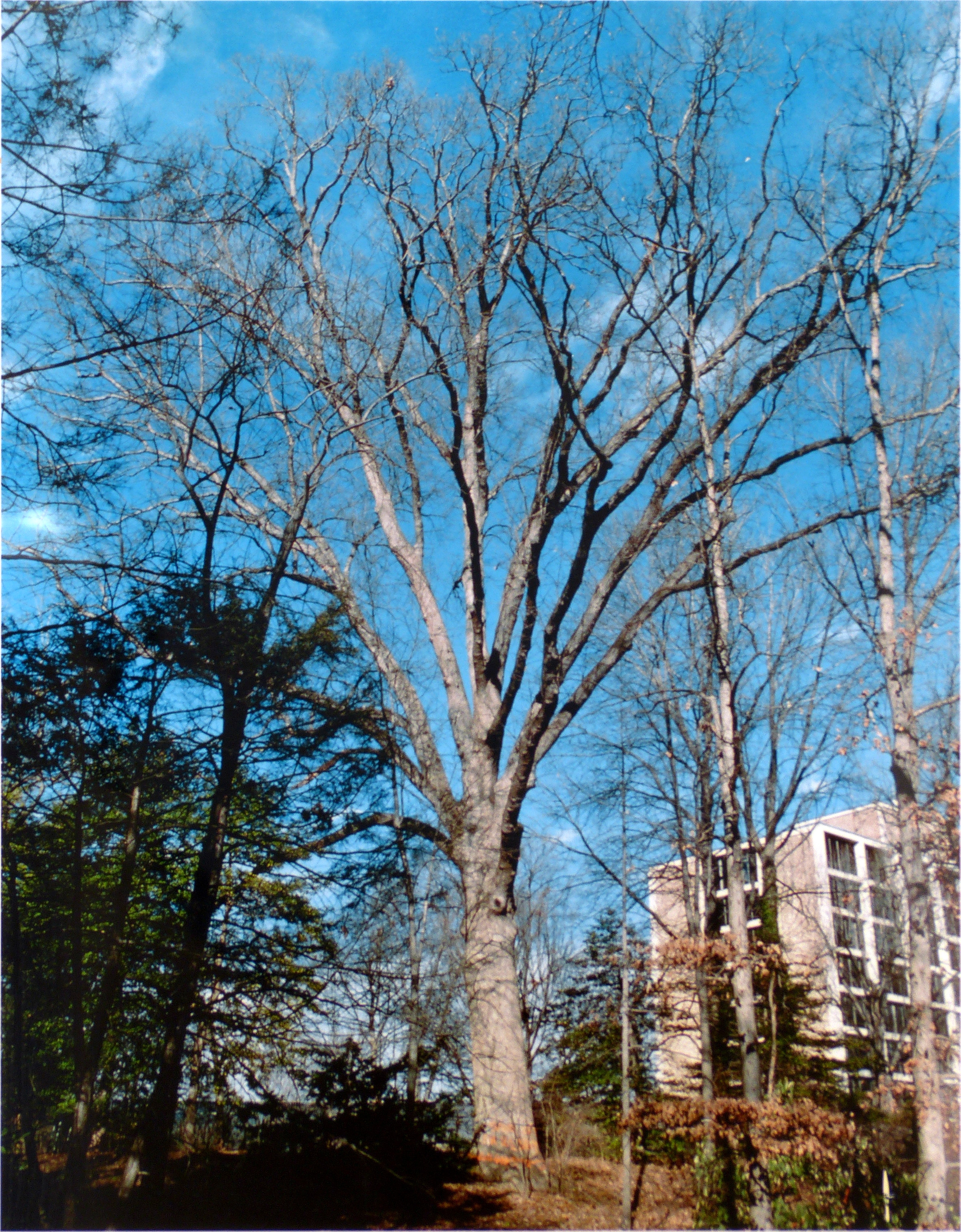Photograph as originally submitted to
this page in the Historical Marker Database
www.HMdb.org.
Click on photo to resize in browser. Scroll down to see metadata.
Photographer: Allen C. Browne
Taken: April 28, 2014
Caption:
White Oak Tree #154 History | Additional Description: The white oak tree sprouted around 1800, surrounded by farmland. When the tree was about 40, surgeons first used ether-induced general anesthesia. When it was about 60, Louis Pasteur perfected the process of pasteurization. The tree's rings reveal that the oak suffered a near-fatal injury around this time, perhaps a lightning strike. The result was slowly spreading and ultimately became a lethal heartwood decay.
X-rays were discovered when the tree was approaching 100 and penicillin when it was about 125. In 1937, the tree shaded workers building NIH's first Bethesda laboratories. It was still standing in 1953, when the original NIH Clinical Center opened, but rotting from within by the time the new hospital was being built.
This expertly preserved 168--pound cross-section is from the tree, felled in 1998 as construction began on the Mark O. Hatfield Clinical Research Center.
A l4-ton, 35-foot segment of this oak was given to the U.S. Navy and used for repairs to the USS Constitution, the historic frigate known as "Old Ironsides" now berthed in Boston Harbor.
Close-up of picture on sign describing the cross-section of the White Oak tree.Submitted: April 29, 2014, by Allen C. Browne of Silver Spring, Maryland.
Database Locator Identification Number: p271859
File Size: 2.657 Megabytes
To see the metadata that may be embedded in this photo, sign in and then return to this page.
